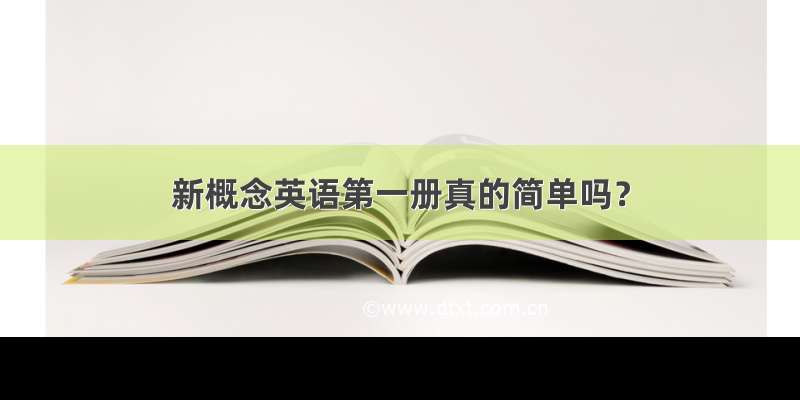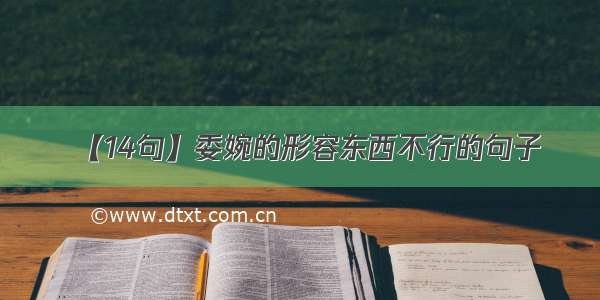
3 特殊句型:there be 句型,be going to 结构
1. Be going to 结构
表示打算,准备,计划做某事
★结构:主语+be动词+going to +动词原型
I am going to make a bookcase.
They are going to paint it.
The father is going to give the bookcase to his daughter.
★变疑问句将be动词移到句首
Are you going to make a bookcase?
Are they going to paint it?
Is the father going to give the bookcase to his daughter?
★变否定句在be动词后面加not
I am not going to make a bookcase.
They are going to paint it.
The father is not going to give the bookcase to his daughter.
★肯定回答及否定回答
Yes, I am. No, I am not.
Yes, they are. No, they are not.
Yes, he is. No, he is not.
★特殊疑问句
What are you going to do?
What are they going to do?
What is the father going to do?
(必背)
2. There be 句型
表示哪里有什么东西(某处有某物)
2 There is+单数名词+表示场所的词(一般为介词词组)
There is a book in this room.
There is a pen on the table
5 There are+复数名词+表示场所的词(一般为介词词组)
There are two pens on the table.
There are three schools there.
★变疑问句将be动词移到句首
Is there a book in this room?
Are there two pens on the table?
★变否定句在动词后面加not
There is not a book in this room.
There are not two pens on the table.
★肯定回答及否定回答
Yes, there is. No, there is not.
Yes, there are. No, there are not.
4 问句:
一般疑问句,特殊疑问句,选择疑问句,反意疑问句,选择疑问句,否定疑问句
1 一般疑问句: 助动词/be动词+主语
Are you a teacher? Do you want to have a cup of tea?
2 特殊疑问句: 特殊疑问词+一般疑问句
What is your name?
3 选择疑问句: or
Do you want beef or lamb?
5 反意疑问句: 肯定陈述句+否定疑问部分, 否定陈述部分+肯定疑问部分
You don’t need that pen, do you?
6 否定疑问句: 一般疑问句+否定词
Aren’t you lucky? Don’t you want have a rest?
5 冠词用法:a/an/the的一般用法
详细见笔记
6 限定词:some, any, many, much
7 some, any 修饰可数名词或不可数名词,some用于肯定句,any用于否定句和疑问句,注意,当期待对方的答案为肯定回答时用some
8 many修饰可数名词,much修饰不可数名词,在口语中表示很多一般不用many, much, 而用a lot of, 在否定句中表示很多用many, much.
I have a lot of money. I don’t have much money.
12 名词:种类,复数,名词所有格
1.名词分为可数名词和不可数名词
3 不可数名词
无法分开的东西:water, tea, bread, milk, rice(米)
抽象的东西:love, beauty, coldness(寒冷)
不可数名词有以下特点:
2 不能用a, an修饰
3 不能加s
4 和单数be动词或动词搭配
5 可数名词:
单数可数名词要用冠词修饰,复数可数名词要在名词后面加s,名词复数共有以下几种变化:
规则变化的名词复数形式
规则1 一般情况+s e.g. shell→shells book→books
规则2 以s, x, ch, sh结尾+es e.g. fox→foxes church→churches, bus→buses, watch→watches
规则3 以o结尾+s或+es e.g. potato→potatoes, Negro→Negroes, hero→heroes, tomato→tomatoes,(口诀:黑人英雄爱吃土豆和西红柿),剩下一般加s, radio→radios
规则4 以f, fe结尾的,变f, fe为ves e.g. life→lives half→halves, shelf→shelves, city→cities, wife→wives
规则5 以辅音字母+y结尾, 变y为i+es e.g. sky→skies fly→flies
不规则变化的名词复数形式
单数 man woman foot goose tooth
复数 men women feet geese teeth
单数 child sheep deer mouse fish
复数 children sheep deer mice fish
13 介词( 注意总结书上词组)
14 副词:用法及形容词变副词的变化
15 副词可以修饰形容词,动词,副词或整个句子。如:
The book is very good.
He runs fast.
She came here quite early.
Certainly I will go with you.
4 变化:
5 直接在形容词后加-ly,
careful-carefully, slow-slowly,
3 以辅音字母加y结尾的形容词,把y变I, 加-ly,
happy-happily, lucky-luckily
6 有些词形容词和副词的形式相同,不需要做任何变化
fast, hard, late
7 有些词加上-ly后意思与原词相差很远:
neary-nearly, high-highly, late-lately,
15 情态动词的使用:can, must, may, might, need,
1.情态动词can(能够), must(必须), may(可以)
结构:主语+can/must/may+动词原型
He can make the tea.
Sally can air the room.
We can speak English.
★变疑问句将情态动词移到句首
Can he make the tea?
Can Sally air the room?
Can we speak English?
★变否定句在情态动词后面加not
He cannot make the tea.
Sally cannot air the room.
We cannot speak English.
★肯定回答及否定回答
Yes, he can. No, he cannot.
Yes, she can. No, she cannot.
Yes, we can. No, we cannot.
★特殊疑问句:
What can you do?
(必背)
注意:情态动词的句子没有第三人称单数的变化,不要在情态动词或动词后面加S。
2.Must/have to的区别
must 表示必须,是主观上觉得应该做,have to是不得不,是由于客观条件逼迫的必要要做
must 只能用在表示现在和将来的句子里,而have to do可以用在任何时态
3.must, may, might表示猜测:
1 must do 表示对现在事实的猜测
2 must have done表示对过去事实的猜测
3 must have been doing 表示对过去正在进行的事实的猜测
4 may/might do, may/might have done表示没有任何事实依据的猜测,might的可能性更小。
5 can’t/couldn’t 表示不可能
4.need 用法:
5 表示“需要”时为实意动词,后面可以加名词,也可以加不定式:
I need a pen. Do you need any beer? No, I don’t.
I need to have a rest.
7 Need doing=need to be done,表示被动
The flowers need watering.
8 Need在否定时做情态动词使用
You needn’t go so early. =You don’t need to go so early.
Must I clean the desk right now? No, you needn’t.
18 不定代词及不定副词:
Some any no every
thing something anything nothing everything
one someone anyone anything everyone
where somewhere anywhere anywhere everywhere
body somebody anybody nobody everybody
I looked for my book everywhere, but I can’t find it anywhere.
If you want go somewhere, if you want to be someone, you must wake up.
Help! Somebody? Anybody?
You are really something.
Since everybody is here, let’s begin our class.
Where did you go? I went nowhere.
Nobody is at home.
I have nothing left.
19 感叹句:
20 What +名词+主语+谓语
What a beautiful girl she is!
11 How + 形容词+主语+谓语
How beautiful the girl is!
20 祈使句:
21 第二人称:
22 let+其他人称代词
23 祈使句的否定,加don’t
24 反意疑问
祈使句(第二人称)
祈使句表示请求,命令,建议,邀请等,谓语动词一律用原型,句子中通常不用主语,句末用惊叹好或者句号,用降调。
★肯定句 动词原型
例, Come here, please. Go downstairs, please. Stand up. Sit down. Be quiet. Be careful.
祈使句中如果有唤语,一定要用逗号隔开,放在句首或者句尾
Come in, Amy.
Sit down here, Tom.
Mary, give me a book please.
★否定:Don"t+动词原型
Don"t come here.
Don’t sit down.
Don’t stand up.
Don’t give me it.
let sb. do
Let me pass.
Let us have a rest.
Let’s have a rest.
(反意疑问):
Let’s have a walk along the river, shall we?
Let us go out for a drink, will you?
21 倒装句:so/neither的倒装eg.
He can swim. So can I.
I didn’t go to class. Neither did I.
结构:
so/neither+be+ 主语
so/neither+助动词+ 主语
so/neither+情态动词+ 主语
一般现在时, do, does/am, is, are
现在进行时, am, is, are
一般过去时, did
现在完成时, have, has
一般将来时, will, shall,
过去进行时,was, were
过去完成时,had
过去将来时, would
22 直接引语/间接引语
如果引语的主句所用动词为过去时,那么间接引语要做相应变化:时态,人称,时间地点及指示词
5 时态变化:
一般现在时——一般过去时
现在进行时——过去进行时
一般过去时——过去完成时
现在完成时——过去完成时
一般将来时——过去将来时
be going to——was/were going to/would
can----------------could
may---------------might
7 时间地点及指示词的变化:
here-there, tomorrow-the next day, the following day, this-that…
8 人称变化:根据句意改变人称。
9 直接宾语/间接宾语
主语+及物动词+间接宾语+直接宾语
直接宾语是及物动词的直接对象,间接宾语是及物动词的动作所涉及的人或事务,也可以说间接宾语表示动作是对谁做的,或者是为谁做的。所以间接宾语要用名词或者宾格代词来担当。
He gives me a book.
me间接宾语, a book直接宾语
直接宾语和间接宾语的位置调换时要加一个介词to或for
主语+及物动词+直接宾语+介词+间接宾语
Give me a book.
Give the book to me.
Send his a letter.
Send a letter to him.
Show him the new dress.
Show the new dress to him.
24 从句:
宾语从句,定语从句(限定性),表语从句,状语从句(if引导的真实条件句)
13 宾语从句:如果宾语从句的主句中的动词为过去时,那么宾语从句中的时态要和主句统一;如果宾语从句为疑问词引导,那么语序要用陈述语序,即主语在前,动词在后。
14 定语从句:
15 表语从句:
16 状语从句(if引导的真实条件句):主句用一般将来时,从句用一般现在时
What will you do if you win a lot of money?
If it rains tomorrow, I will stay at home.
26 动词不定式做宾语及宾语补语的用法(详细用法请见NECII)
结构: to do,
用法:可以做除谓语以外的所有成分,语法上称之为非谓语动词。
做宾语:在一些动词后常用不定式做宾语,例如:want, like, ask ,try…
做宾补:want sb. to do, ask sb. to do, like sb. to do…
附录:
代词及be动词
名词复数
动词的第三人称单数形式
动词现在分词
动词过去式
过去式的读音
形容词的比较级
形容词和副词的最高级
代词及be动词 第一人称 第二人称 第三人称 ........
单数 复数 单数 复数 单数 复数
主格 I we you you she/he/it they
宾格 me us you you her/him/it them
代词所有格 my our your your her/his/its their
名词性代词 mine ours yours yours hers/his/its theirs
be动词现在时 Am are are are is are
be动词过去时 was were were were was were
名词的复数
规则变化的名词复数形式
规则1 一般情况+s e.g. shell→shells toy→toys
规则2 以s, x, ch, sh结尾+es e.g. fox→foxes church→churches
规则3 以o结尾s或+es e.g. radio→radios potato→potatoes
规则4 以f, fe结尾的,变f, fe为ves e.g. life→lives half→halves
规则5 以辅音字母+y结尾, 变y为i+es e.g. sky→skies study→studies
动词的第三人称单数形式
规则1 一般情况+s e.g. like-likes, look--looks
规则2 以s, x, ch, sh结尾+es e.g. do-does, catch--catches
规则5 以辅音字母+y结尾, 变y为i+es e.g. carry-carries, fly--flies
动词现在分词
规则一 一般动词加-ing e.g. look-looking, read-reading, play-playing
规则二 以不发音的字母结尾的单词去e加-ing e.g. make-making, take-taking, arrive-arriving
规则三 重读闭音节词结尾, 即单词中只有一个元音字母,其后紧跟一个辅音字母的词,双写辅音字母再加-ing e. g. run-running, sit-sitting, get-getting, swim-swimming, stop--stopping
动词过去式
规则动词变化
规则一 一般动词加-ed e.g. look-looked, watch-watched, play--played
规则二 以e结尾的加-d e.g. make-maked, arrive--arrived
规则三 以辅音字母加结尾的变y为i加-ed cry-cried, carry-carried
规则四 重读闭音节词结尾, 即单词中只有一个元音字母,其后紧跟一个辅音字母的词,双写辅音字母再加-ed stop-stopped,
过去式的读音
在清辅音后面(除外)读/t/ e.g. walked, jumped
在浊辅音和元音后读/d/ e.g. washed, watched
在/t/,/d/后读/id/ e.g. waited, hated
形容词和副词的比较级
比较级 规则一 一般加-er e.g. high-higher
规则二 以结尾加-r nice-nicer
规则三 以辅音字母加y结尾,变y为i再加-er busy-busier,
规则四 重读闭音节结尾, 双写辅音字母再加-er fat-fatter,
形容词和副词的最高级
最高级 规则一 一般加-est e.g. high-highest
规则二 以结尾加-st nice-nicet
规则三 以辅音字母加y结尾,变y为i再加-est busy-busiest
规则四 重读闭音节结尾, 双写辅音字母再加--est fat-fattest
常见缩写:
is=’s I am=I’m are=’re
is not=isn’t/ iznt/ are not=aren’t /a:nt/
do not=don’t
does not=doesn’t
was=’s
did not=didn’t
can not=can’t
have=’ve
has=’s
have not=haven’t
has not=hasn’t
will=’ll
will not=won’t
shall not=shan’t















